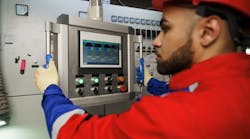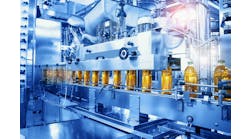Add-on graphics and user-defined data types enhance HMI experience
Sue Burtch is senior commercial portfolio manager at Rockwell Automation.
Can you explain how software development has changed operator interfaces in manufacturing?
Sue Burtch, senior commercial portfolio manager, Rockwell Automation: Flexible, object-oriented human-machine-interface (HMI) programming, combined with tight integration to the real-time control system has given HMI developers great opportunities for efficiency and innovation.
Developers can create user-defined data types (UDTs) in the controller that model the plant floor process equipment and then reference them with multiple instances as necessary. For example, if they have many tanks they can develop one UDT to represent them and then use multiple instances of it mapped to each tank.
Also read: The changing face of operator interface
Then they can pull them directly into the HMI environment and tie them to add-on graphics (AOGs), which include pictures of the equipment tied to the UDT's extended tag properties. In the tank example, that could be tank.level or tank.temperature. Modifications to the UDT can be seamlessly inherited by the AOGs in the HMI.
HMI developers have options for multi-user collaborative development in the cloud with revision control and remote deployment of applications over a virtual private network (VPN), available for both sealed HMI terminal appliances and open-platform industrial PCs running Windows or Linux.
Furthermore, these systems are highly extensible through application program interfaces (APIs), which allow developers to customize systems using statement-oriented languages like C# (C Sharp) and also the use of open standards like OPC UA, which can be used to pass data between applications locally and remotely, as well as message queuing telemetry transport (MQTT), which can be used to pass data to the cloud.
Also read: HMIs create a window of opportunity
How do operator-interface technologies figure into digital-twin platform models being used by manufacturers?
Sue Burtch, senior commercial portfolio manager, Rockwell Automation: HMI hardware and software offerings can come with embedded emulation functions which can connect to the controller emulator. The controller emulator in turn can seamlessly connect to a virtual commissioning system, which can emulate entire process lines, so you can discover issues with your machinery before it's ever built and fully train operators on the machinery before it's been delivered, saving costs and reducing time-to-benefit.
Also read: Membrane puts the human in HMI






